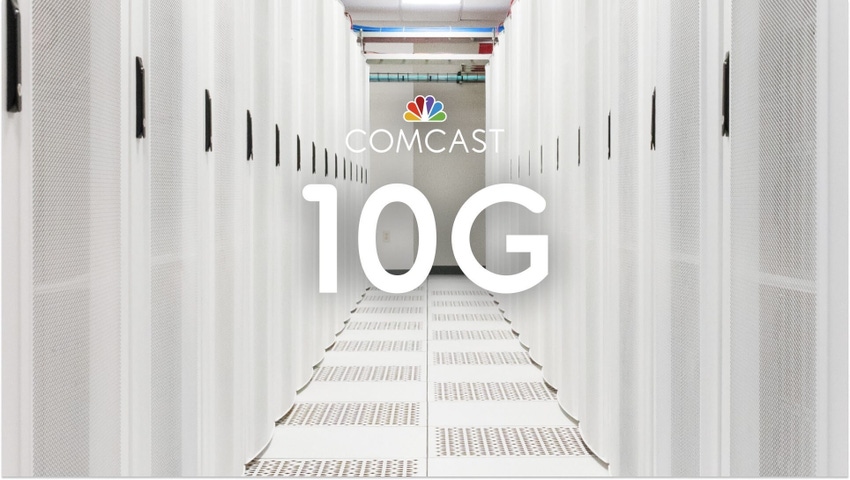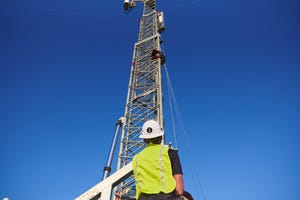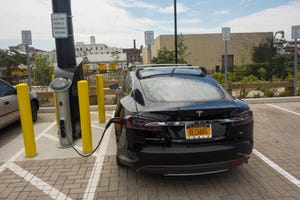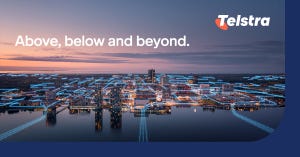Comcast sparks field trials of low-latency DOCSIS
Comcast is working with Apple, Nvidia and Valve on an array of low-latency DOCSIS field trials with customers in multiple markets. Comcast plans to make the new capability available by the end of 2023.

Comcast said it has kicked off the industry's first field trials of low-latency DOCSIS (LLD), a feature for coming DOCSIS 4.0 networks that also fits into the cable industry's broader "10G" initiative. Comcast expects to launch LLD optimization on a commercial basis by the end of 2023.
Comcast's field trials will be used to demonstrate some initial applications of LLD to consumers. To that end, the company has teamed with a set of companies – Apple, Nvidia and Valve – to help take LLD to the test, Jason Livingood, VP of technology policy, product and standards engineering at Comcast, explained in this blog post. Comcast is also encouraging any app developer to participate in the LLD field trails by sending an email to [email protected].
He noted that, during the initial trials, content providers can mark their traffic as latency-sensitive for the first time using referenced, openly documented technical guidelines. Comcast customers in trial markets that lease the latest Comcast 10G gateways, including the XB7 and XB8 models, or own an Arris S33 or Netgear CM1000v2 gateway, can participate in the trial.
Comcast confirmed that field trials will be conducted in markets where Comcast has completed network upgrades that enable the new low-latency capabilities. In February, Comcast announced that more than 40 markets have been upgraded, including Atlanta, Boston, Chicago, Denver, Houston, Miami, Philadelphia, Seattle, San Francisco, Washington, and Salt Lake City, among others.
The 411 on LLD
The original LLD specs were released in June 2019 as an extension to DOCSIS 3.1, and later were included as a core element of the new DOCSIS 4.0 specs. Low latency is also a tenet of a broader 10G initiative that covers multiple types of access networks, including hybrid fiber/coax (HFC), fiber-to-the-premises (FTTP) and wireless.
Low-latency DOCSIS takes advantage of the Internet Engineering Task Force's Low Latency Low Loss Scalable Throughput (L4S) standards that enable network links, such as those delivered via a broadband gateway, to process and support latency-sensitive traffic.
LLD is designed to work by separating small, delay-sensitive, non-queue-building traffic (such as key clicks for an online game) from the primary and much heavier queue-building traffic that, for example, might carry a video stream or a large file upload or download. LLD effectively makes a dynamic bandwidth split between the low-latency lane and the primary lane that, together, still equal the total subscriber bandwidth.
Execs at CommScope, an early adopter of LLD, have previously likened the technology to a "quiet car" on a train. In that analogy, occupants of the low-latency quiet car are kept separate from the other travelers, but the overall capacity of the train stays the same, and they all still travel to the same destination.
In today's blog post, Livingood stressed that the low-latency flow shares the same bandwidth and best-efforts prioritization as regular traffic, but doesn't adversely affect the quality, speed or latency of unmarked traffic.
"App developers mark traffic as latency sensitive, so that LLD can then manage the low latency flows to optimize application performance and quality for customers who use those applications," he explained. "Application marking is entirely voluntary and available for use with no special cost, agreement, or proprietary APIs. Comcast's use of LLD respects those markings in accordance with relevant IETF standards."
Gearing up for latency-sensitive apps
LLD is entering the scene to help support a variety of apps that require low latencies, including virtual reality, augmented reality and online, multiplayer gaming.
Among recent examples of how the technology is entering the market, Livingood pointed to a demo at Apple's recent Worldwide Developer Conference showing how lower latencies can improve video conferencing quality, and that Apple has already integrated support for L4S into iOS 17, iPadOS, macOS Sonoma and tvOS 17 for apps such as FaceTime.
Comcast's LLD field trials will also focus on other latency-sensitive apps such as GeoForce NOW, Nvidia's cloud gaming service, he added.
Comcast said the trials will provide data and feedback on the kind of latencies that can be delivered with LLD. The operator expects "working latency for low latency marked packets to be around 10ms [milliseconds] after LLD is deployed," a company spokesperson said in response to emailed questions.
"Once deployed, LLD optimization will be available to any developer that supports the new IETF standards," Livingood noted.
Low latency: A money-maker or product-enhancer?
It's not yet clear if or how LLD capabilities will be a money-maker on their own, perhaps as a premium add-on, or if they'll be used as enhancement that is built into broadband services and marketed as a product differentiator.
Comcast has not announced how it will market and sell its coming LLD capabilities.
Cox Communications markets a low-latency service called Elite Gamer that comes bundled with its Panorama-branded Wi-Fi gateway. Cox also sells Elite Gamer as a standalone for $6.99 per month.
Related posts:
— Jeff Baumgartner, Senior Editor, Light Reading
About the Author(s)
You May Also Like












